When it comes to purchasing a vehicle, whether brand-new or used, one of the most important financial considerations is depreciation — the inevitable decline in a car’s value over time. Depreciation can significantly affect the total cost of ownership, influencing everything from monthly loan payments to insurance premiums and resale or trade-in values.
Understanding how quickly or slowly different cars lose value is crucial for savvy buyers who want to maximize their investment or minimize long-term costs.
This knowledge is especially vital in today’s automotive landscape, where vehicle prices fluctuate due to various factors, including supply chain disruptions, shifts in consumer preferences, technological advancements, and economic conditions.
In simple terms, depreciation refers to the loss in market value a car experiences from the moment it rolls off the dealership lot. This drop happens for multiple reasons: the vehicle becomes less “new,” mileage increases, newer models arrive with better features or designs, and wear and tear accumulate.
On average, a new car can lose anywhere between 20% to 30% of its value within the first year, with total depreciation reaching around 50% or more after three years.
However, these are just averages — some vehicles depreciate faster, while others retain their value remarkably well. The disparity in depreciation rates is influenced by brand reputation, vehicle type, reliability, market demand, and even cultural or emotional factors that shape buyer preferences.
For example, large luxury sedans may lose value rapidly due to high initial price tags and lower demand in the used market, while rugged pickup trucks or sought-after sports cars might hold their value much better. Additionally, vehicles with exceptional reliability records, strong brand loyalty, or niche appeal tend to depreciate slower.
Conversely, cars that face poor reliability ratings, high maintenance costs, or a limited resale market usually suffer steep depreciation. Understanding these patterns helps buyers make informed choices, whether they prioritize upfront affordability, long-term value, or a combination of both.
This article dives into two distinct groups of vehicles over a three-year ownership period: the five cars with the fastest depreciation and the five with the slowest.
By examining these extremes, readers can gain valuable insights into what makes some cars lose their value quickly and what allows others to defy the typical depreciation curve. This analysis isn’t just academic — it has practical implications for anyone planning a vehicle purchase, trade-in, or lease return.
On the one hand, vehicles with the fastest depreciation rates often come with hidden costs or drawbacks that reduce their appeal in the used market. Whether it’s outdated technology, poor reliability, high maintenance expenses, or shifting consumer tastes, these cars quickly lose their luster.
While buying them new might offer short-term benefits such as lower sticker prices or flashy features, their rapid loss of value can turn into a financial burden. For buyers who don’t intend to keep a vehicle long-term, these cars might still make sense, but it’s essential to understand the trade-offs.
On the other hand, the slowest depreciating cars often embody a combination of trusted brand reputation, mechanical reliability, enduring design, and strong market demand. These cars not only offer better resale or trade-in values but also tend to provide a more satisfying ownership experience over time.
From rugged trucks like the Toyota Tacoma to iconic sports cars like the Porsche 911, these vehicles attract buyers who appreciate durability, status, or functionality. Their ability to hold value makes them particularly attractive for lease returns, used car buyers, and long-term owners alike.
By exploring these two sides of the depreciation spectrum, this article aims to equip car buyers, enthusiasts, and investors with a deeper understanding and actionable insights. Whether your priority is minimizing depreciation loss, enjoying a dependable ride, or making a smart investment, knowing which vehicles fall into each category can guide smarter decisions.
So, let’s explore the top five cars that lose value the fastest and the five that defy the odds by maintaining their worth over a three-year span.
Also Read: 5 Sedans With Best Throttle Response And 5 That Are Sluggish
5 Cars with the Fastest Depreciation (3-Year Drop)
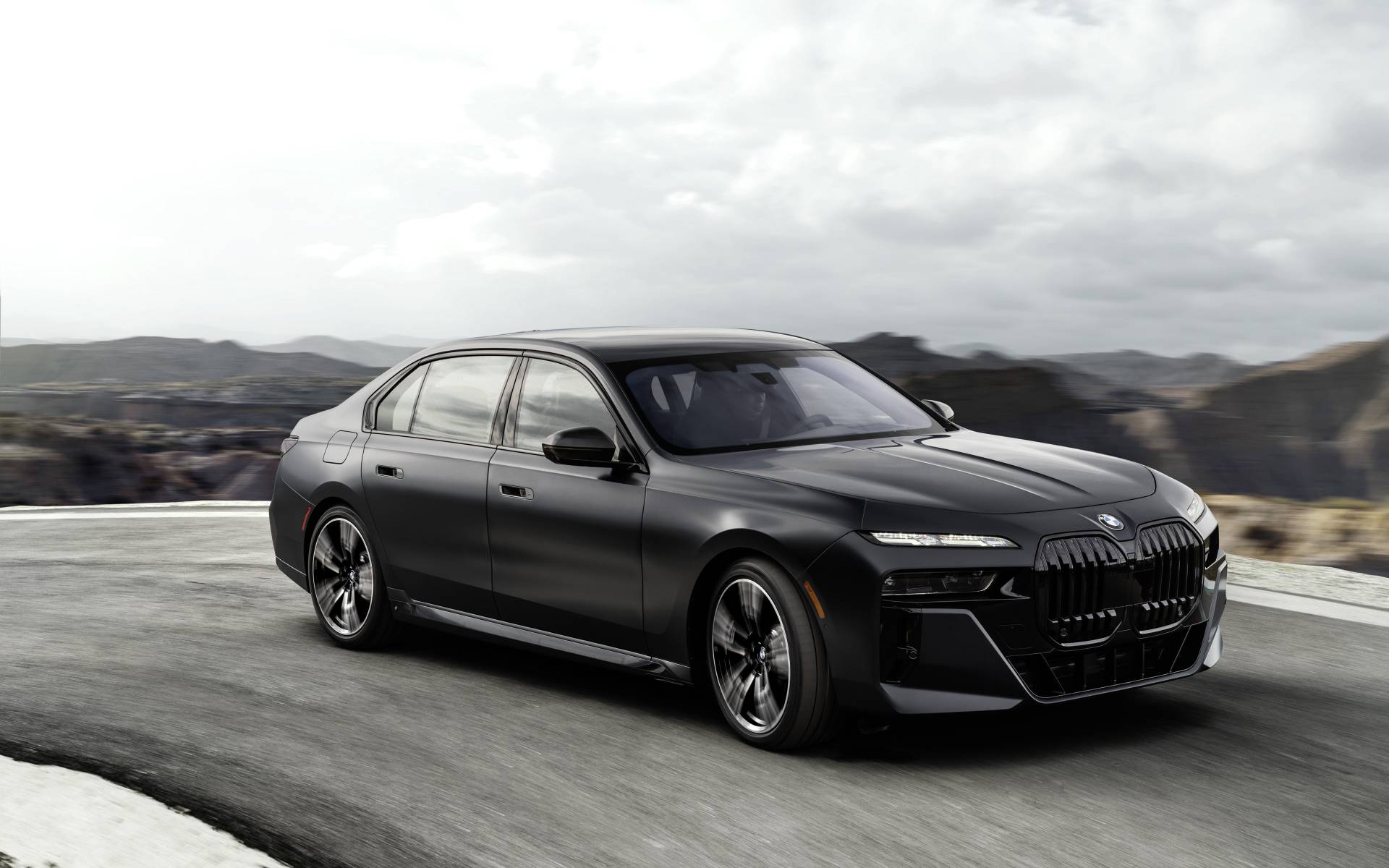
1. BMW 7 Series
Luxury sedans like the BMW 7 Series exemplify one of the fastest depreciation rates in the automotive world. These vehicles are initially priced at a premium, reflecting top-tier craftsmanship, cutting-edge technology, and a badge synonymous with prestige.
However, the very elements that make them desirable new—high technology, opulent features, and luxury branding—turn into liabilities as they age. The moment a luxury sedan is driven off the lot, it loses a significant portion of its value, and the depreciation accelerates rapidly in the first three years.
The high purchase price means the absolute dollar amount lost is considerable. For instance, a brand-new 7 Series might cost upwards of $90,000 or more, but after three years, it could lose nearly half that value, making it a poor investment if resale value is a priority.
Part of the reason for such rapid depreciation stems from the complexity and cost of maintaining luxury vehicles. Luxury sedans are packed with advanced electronics, high-performance engines, and unique materials that require specialized servicing.
As these vehicles age, maintenance and repair costs can escalate quickly. This higher cost of ownership discourages many potential buyers in the used market, especially when cheaper alternatives or newer luxury models are available.
The perception of expensive repairs and the uncertainty about long-term reliability push resale prices down. This effect is compounded when warranties expire, placing the risk of costly repairs squarely on the second owner.
The shifting automotive market landscape also works against luxury sedans like the BMW 7 Series. Consumer preferences have increasingly shifted toward SUVs and crossovers, which offer more utility, higher driving positions, and a perception of better safety. Large sedans are no longer the default choice for luxury buyers, reducing demand in the used market.
This decline in popularity translates into lower resale values, as fewer buyers are willing to pay premium prices for a type of vehicle they perceive as less practical or outdated. The market saturation of newer, flashier SUVs with similar luxury features further erodes the 7 Series’s appeal.
Moreover, luxury sedans are often heavily leased, and lease returns flood the used market with relatively new vehicles. This influx increases supply and depresses prices for used luxury sedans. Lease incentives also lower the effective purchase price for new buyers but don’t apply to used vehicle buyers, creating a value gap that results in accelerated depreciation.
The combination of high initial cost, rapid supply increase, costly upkeep, and changing tastes ensures luxury sedans depreciate faster than nearly any other vehicle segment.
Finally, technology obsolescence plays a significant role in accelerating depreciation. The rapid pace of advancements in infotainment, driver assistance systems, and powertrain efficiency means that a three-year-old luxury sedan can quickly look outdated compared to new models.
Buyers in the luxury market tend to seek the latest gadgets and innovations, so older models are less desirable. This constant push for the newest technology exacerbates depreciation for models like the BMW 7 Series, where the car’s appeal heavily depends on staying on the cutting edge of innovation.
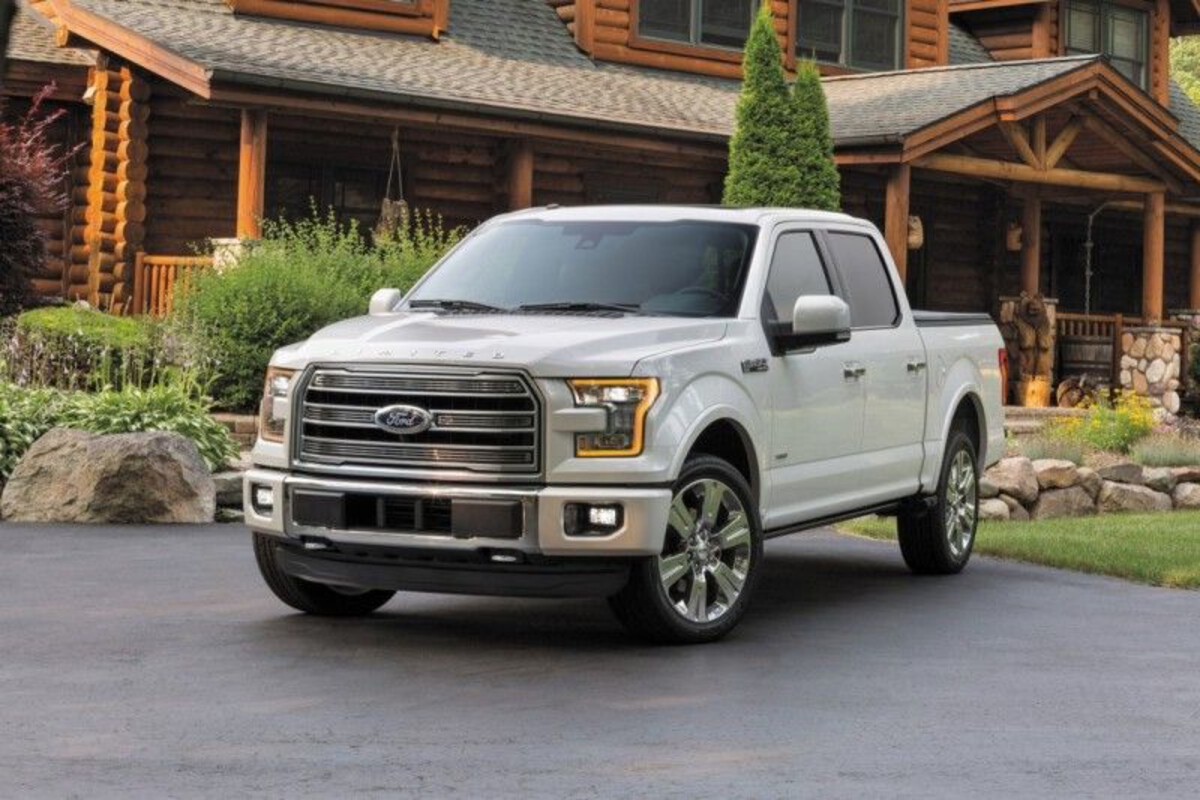
2. Ford F-150 Limited
Large pickup trucks, especially high-end trims like the Ford F-150 Limited, occupy a unique niche in the automotive market. While pickups traditionally hold value well due to their utility and broad appeal, the luxury and fully loaded variants experience sharp depreciation.
The initial price premium for high-end pickups creates a significant depreciation baseline. For example, the Ford F-150 Limited can cost over $70,000 when new, but three years later, it may be worth nearly 40% less. Buyers looking for used trucks tend to prioritize ruggedness, reliability, and simplicity, which contradicts the luxury trim’s emphasis on technology and comfort.
The luxury pickup buyer pool is smaller, and when these vehicles enter the used market, demand is often weaker. Many buyers of used trucks use them for work and practical purposes, seeking durability and ease of maintenance over plush interiors and advanced infotainment systems.
This practical buyer mindset means that fully loaded trucks depreciate faster, as the incremental luxury features do not hold their value as well as core functionality. Consequently, the resale price of luxury pickups declines faster than more basic models designed for work or fleet use.
Fuel economy and operating costs also weigh heavily on depreciation. High-end pickups usually feature larger engines that consume more fuel, especially in urban or suburban settings. Rising fuel prices and increasing awareness of environmental issues further deter buyers from investing in luxury trucks that are costly to operate.
The added weight and complexity of luxury trims may also increase maintenance costs, creating another barrier to retaining value. Buyers looking for value in the used truck market often favor mid-range or basic models that are cheaper to maintain and fuel.
Another factor influencing the depreciation of luxury pickups like the F-150 Limited is the fast-paced innovation in the segment. New models regularly introduce advanced driver assistance features, improved fuel efficiency, and upgraded interiors, making older luxury pickups feel outdated more quickly.
As a result, consumers prefer newer models, accelerating the depreciation of older ones. Furthermore, many luxury pickups are leased heavily, and lease returns flood the used market, increasing supply and driving down prices.
The growing popularity of SUVs and smaller pickups also detracts from demand for large luxury trucks. Buyers increasingly favor vehicles that combine luxury and utility with better fuel economy and maneuverability.
This market shift reduces the desirability of luxury trims on big pickups, pushing their depreciation rates higher. Therefore, while large pickups as a category have traditionally been resilient in retaining value, the luxury sub-segment within it is much more vulnerable to steep depreciation.
Finally, luxury pickups are often perceived as “status symbols,” which creates a narrower demographic interested in purchasing used models. Unlike basic pickups valued for utility, luxury trucks appeal more to buyers who want the latest technology and design cues.
As these buyers typically prefer new vehicles, the used market for high-end pickups is less robust, further accelerating depreciation rates for models like the Ford F-150 Limited.

3. Nissan Leaf
Electric vehicles (EVs), such as the Nissan Leaf, have historically experienced some of the steepest depreciation curves, particularly in the early years of their market presence. The Leaf, one of the pioneering mass-market EVs, faced significant challenges in holding value after purchase.
Early models had limited driving range—sometimes less than 100 miles per charge—which limited their practicality and appeal in the used market. Range anxiety and uncertainty about battery life contributed to quick drops in resale value. The three-year depreciation on the Leaf often surpasses 50%, a staggering loss compared to many gasoline-powered cars.
A major factor behind this depreciation is the rapid technological advancements within the EV sector. Battery technology, charging infrastructure, and vehicle range have improved drastically over just a few years.
As a result, newer EVs outperform older models in nearly every aspect, making older EVs look obsolete quickly. This rapid pace of innovation deters buyers from paying premium prices for outdated technology, directly impacting the resale value of older electric vehicles like the Leaf.
Government incentives further complicate the depreciation picture. When purchased new, EVs often benefit from substantial tax credits and rebates, which significantly reduce the effective price for buyers.
However, these incentives typically do not extend to the used market, making secondhand EVs comparatively less attractive. The price gap created by incentives leads to a “new car premium,” pushing down used car prices and accelerating depreciation.
Battery health and warranty concerns also weigh heavily on used EV resale values. Buyers frequently worry about the degradation of the battery pack—a costly component to replace, especially since older EVs may be approaching or exceeding their warranty periods.
This uncertainty reduces confidence in used EV purchases, depressing prices. Additionally, repair and replacement costs for EV components remain higher than for traditional vehicles, further pushing depreciation.
Charging infrastructure challenges also play a role in EV depreciation. Regions without adequate fast-charging networks or where charging stations are sparse see weaker demand for used EVs. Buyers often hesitate to invest in electric cars that might be inconvenient to charge, especially older models with slower charging capabilities.
These geographic and infrastructure factors limit the appeal of used EVs like the Nissan Leaf, resulting in faster depreciation.
Lastly, consumer perception and market maturity affect depreciation. Early EV adopters were more tolerant of limitations such as range and charging times. However, as the market expands to more mainstream buyers, expectations have risen dramatically.
These buyers demand longer ranges, faster charging, and more refined technology, leaving older EVs behind in terms of desirability. Until battery technology and infrastructure improvements are universally accessible and trusted, EVs like the Leaf will continue to experience steep depreciation in their early years.
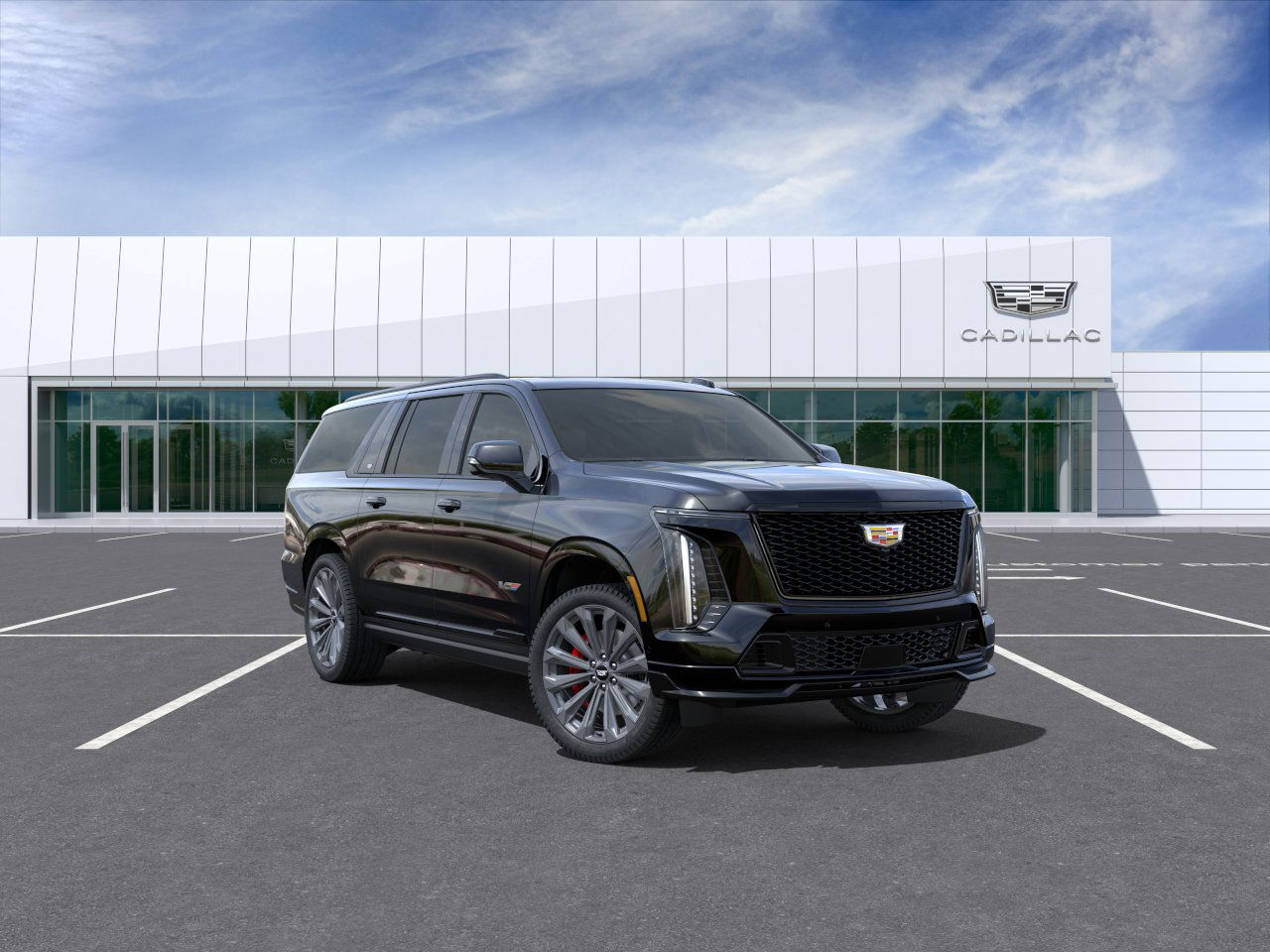
4. Cadillac Escalade
Full-size luxury SUVs like the Cadillac Escalade command a strong presence on the road and come with high price tags reflecting their opulence and capability. However, this class of vehicle is notorious for rapid depreciation within the first three years of ownership.
The Escalade’s initial cost can easily exceed $85,000, and despite its luxury credentials, it often loses nearly half its value in a relatively short period. The reasons for this rapid value drop are multifaceted, encompassing operating costs, shifting consumer tastes, and competition.
One of the primary contributors to the Escalade’s steep depreciation is the high cost of ownership. Luxury SUVs are expensive to maintain, with costly repairs and premium parts that can deter potential used buyers.
The vehicle’s fuel consumption is another major downside; the Escalade’s large V8 engine and hefty curb weight result in poor gas mileage, which becomes increasingly unappealing as fuel prices rise or as buyers seek greener alternatives. This combination of high operating costs reduces demand in the used market and pushes down resale values.
Additionally, the Escalade faces intense competition from other luxury SUVs, many of which offer newer technology, more fuel-efficient engines, and more modern styling. Mercedes-Benz GLS, BMW X7, and Lexus LX models flood the market with fresh alternatives, making the older Escalade appear outdated.
Consumers looking for a luxury SUV in the used market can choose from many competitors, which increases supply and reduces prices for the Escalade.
Another factor is the changing tastes of luxury buyers. The massive size of the Escalade, once a symbol of status and power, is now a disadvantage in urban settings where maneuverability, parking, and fuel efficiency are more important.
Younger luxury buyers often prefer smaller, sportier, or electric SUVs, which further reduces demand for full-size luxury SUVs on the used market. Environmental concerns and stricter emissions regulations have also led to decreasing popularity for gas-guzzling vehicles like the Escalade.
The high turnover of leased luxury SUVs adds another layer to the depreciation story. Escalades are commonly leased, and lease returns saturate the used market, driving prices down. The influx of almost-new vehicles available for resale creates downward pressure on the values of existing used models. This supply glut is a key reason why Escalades and similar luxury SUVs depreciate rapidly.
Finally, insurance and taxation costs tied to the Escalade’s high value and large engine size discourage potential buyers from purchasing used models. Buyers are conscious of the total cost of ownership, which includes insurance premiums and registration fees, making the Escalade less attractive as a used vehicle.
All these factors combined ensure that full-size luxury SUVs like the Cadillac Escalade face some of the fastest depreciation rates in the automotive market.
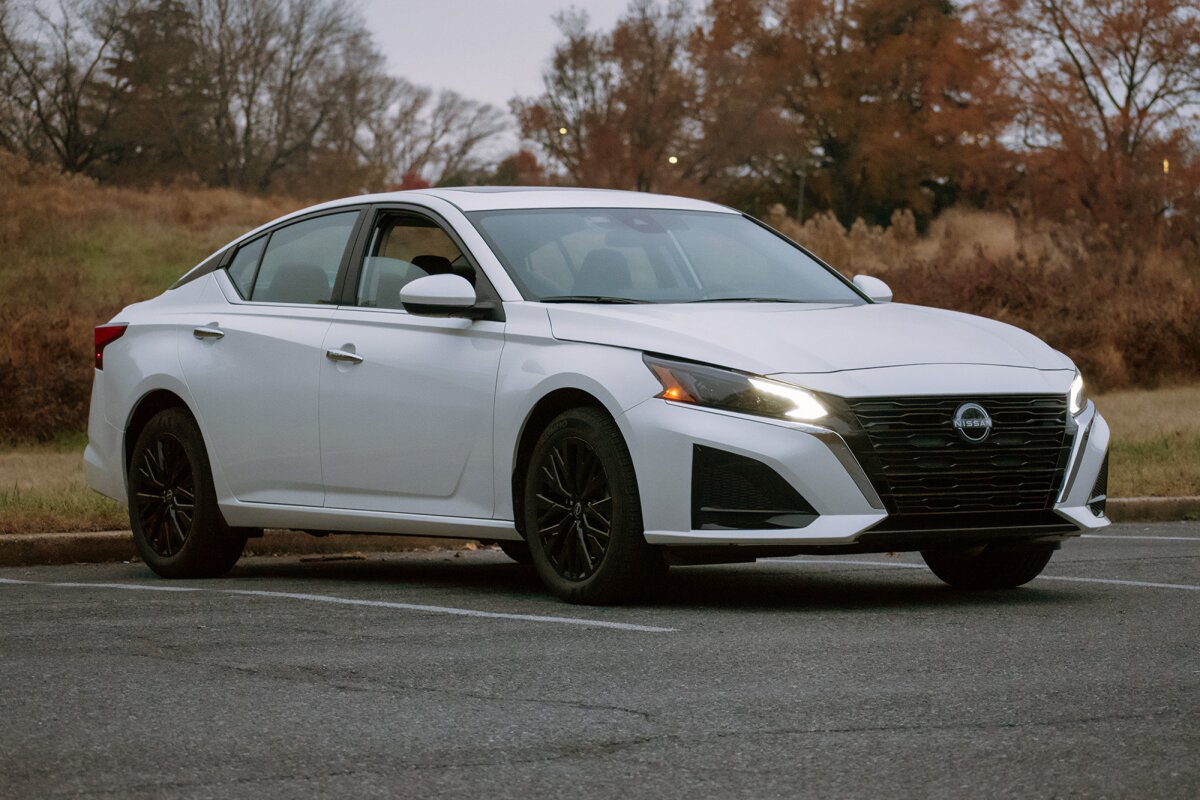
5. Nissan Altima
Midsize sedans, such as the Nissan Altima, represent a segment that has traditionally been popular among consumers but now suffers from steep depreciation due to shifting market dynamics.
Once the backbone of family transportation, midsize sedans have lost significant ground to SUVs and crossovers. Despite their practicality, fuel efficiency, and affordability, many midsize sedans experience value drops of 40% or more within just three years, making them some of the fastest depreciating vehicles in the current market.
A major driver of this depreciation is the oversupply of used midsize sedans. Because these vehicles are so common and have been produced in large volumes, the used car market is flooded with available units. This surplus suppresses prices as sellers compete for a limited pool of buyers.
Additionally, manufacturers heavily discount new midsize sedans to compete with the growing SUV market, which also lowers the baseline resale values. When many new vehicles are offered at aggressive prices, used cars must adjust accordingly.
Consumer preferences have dramatically shifted away from sedans toward SUVs, crossovers, and trucks over the past decade. These body styles offer higher seating positions, more cargo space, and a perception of greater safety, aligning with the lifestyle needs of many buyers.
This change in tastes has made midsize sedans less desirable, leading to quicker depreciation. As demand wanes, dealers and private sellers find it harder to maintain strong resale values.
Furthermore, midsize sedans like the Altima often lack standout features that differentiate them from competitors. Without premium luxury appointments or cutting-edge technology, these vehicles can appear bland or outdated quickly.
Buyers increasingly expect modern infotainment, safety technologies, and design flair, which midsize sedans sometimes fail to deliver at a competitive level. This absence of “wow” factors contributes to faster depreciation.
Finally, the proliferation of highly fuel-efficient compact SUVs and crossover alternatives has further eroded the midsize sedan market.
Vehicles that offer similar fuel economy but with added utility and style attract buyers who might otherwise consider sedans. The Nissan Altima, while reliable and affordable, faces tough competition from these new options. This dynamic pushes down resale prices and accelerates depreciation within the midsize sedan category.
5 Cars with the Slowest Depreciation (3-Year Drop)
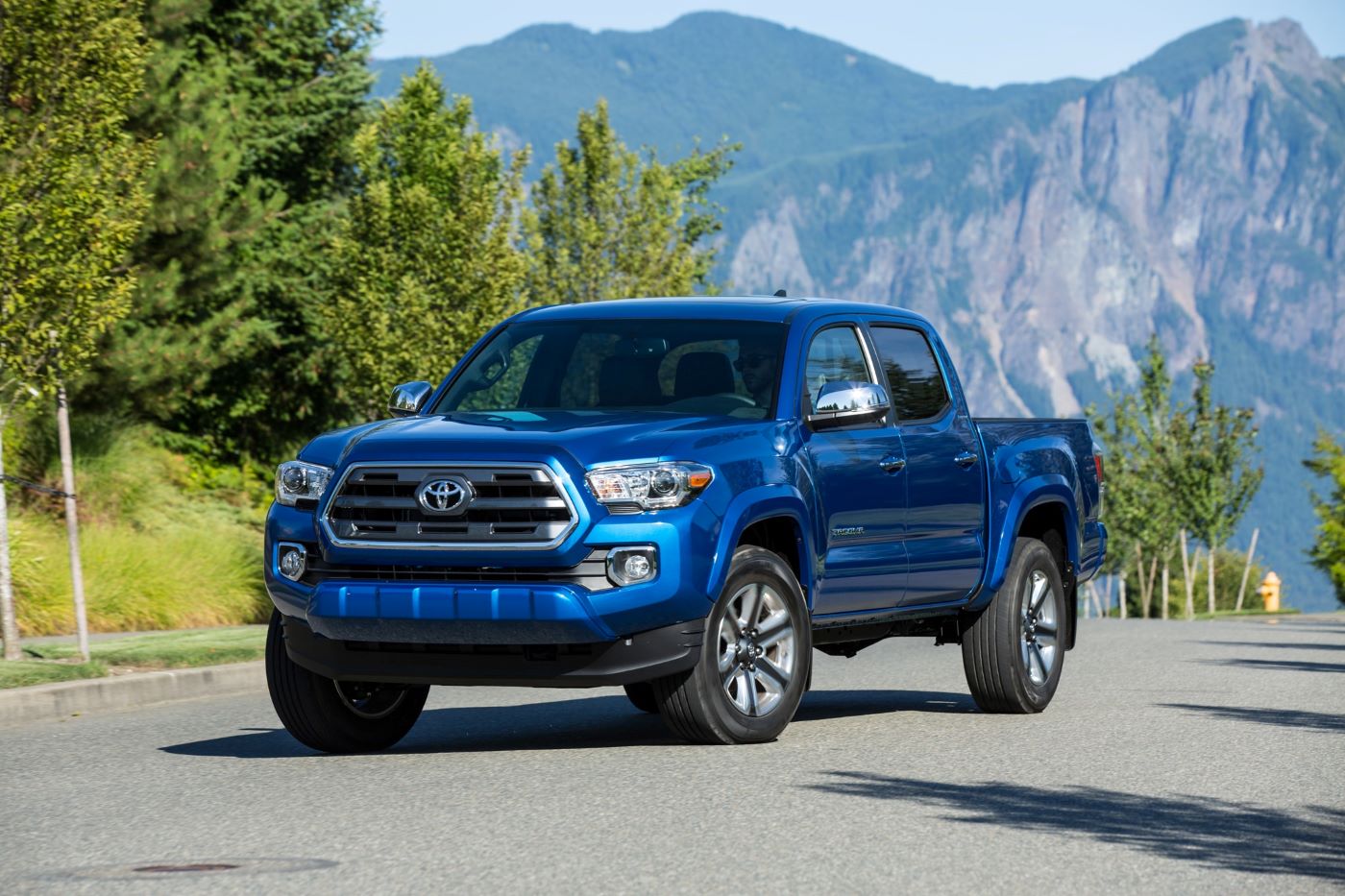
1. Toyota Tacoma
The Toyota Tacoma has built an unparalleled reputation for reliability and durability, making it a perennial favorite in the used vehicle market. One of the key reasons the Tacoma enjoys the slowest depreciation among trucks is its near-legendary longevity.
Buyers know that a Tacoma can rack up hundreds of thousands of miles with minimal major repairs, which means the demand for used Tacomas remains high regardless of mileage or age. This strong resale demand translates directly to slower depreciation, with some models retaining over 70% of their original value even after three years.
Another factor contributing to the Tacoma’s strong resale value is its versatility. Unlike many trucks that are strictly workhorses or luxury vehicles, the Tacoma balances everyday practicality with off-road capability and ruggedness. This adaptability attracts a broad spectrum of buyers—from contractors and outdoor enthusiasts to families needing a reliable daily driver.
The Tacoma’s iconic status as a mid-size pickup that can handle rough terrain while still being manageable in urban environments keeps demand steady, reducing supply pressure in the used market.
Brand loyalty also plays a significant role in the Tacoma’s value retention. Toyota has built a reputation for producing dependable, high-quality vehicles across multiple segments, and the Tacoma stands out as one of its flagship products.
This reputation influences buyer psychology; used car shoppers are willing to pay a premium for a Toyota simply because they trust the brand’s engineering and after-sales support. Additionally, Tacoma’s strong safety scores and consistent feature upgrades over model years help maintain buyer interest and market value.
Fuel efficiency, while not the top priority for pickup buyers, also favors the Tacoma’s value retention compared to larger full-size trucks. The Tacoma’s smaller size and lighter weight contribute to relatively better fuel economy in its class, which appeals to cost-conscious buyers.
As fuel prices fluctuate, having a truck that balances power and efficiency becomes increasingly important. This balance makes the Tacoma more attractive in the used market, especially in regions where fuel costs are a significant concern.
The Tacoma also benefits from a robust aftermarket and enthusiast community, which supports its long-term desirability. Many buyers view the Tacoma not only as a utilitarian vehicle but also as a platform for customization and adventure.
This vibrant community adds value by ensuring that parts and modifications are readily available, which helps keep older models relevant and desirable. Moreover, the Tacoma’s resale market is buoyed by this loyal user base who often trade within the brand, sustaining demand and holding depreciation at bay.
Finally, Tacoma’s pricing strategy at the new car level aligns closely with its perceived value. Toyota prices the Tacoma competitively but not aggressively discounted, avoiding steep initial price drops that often lead to faster depreciation.
The combination of consistent pricing, trusted engineering, and strong market demand ensures the Tacoma remains one of the best vehicles to hold its value over a three-year ownership period.
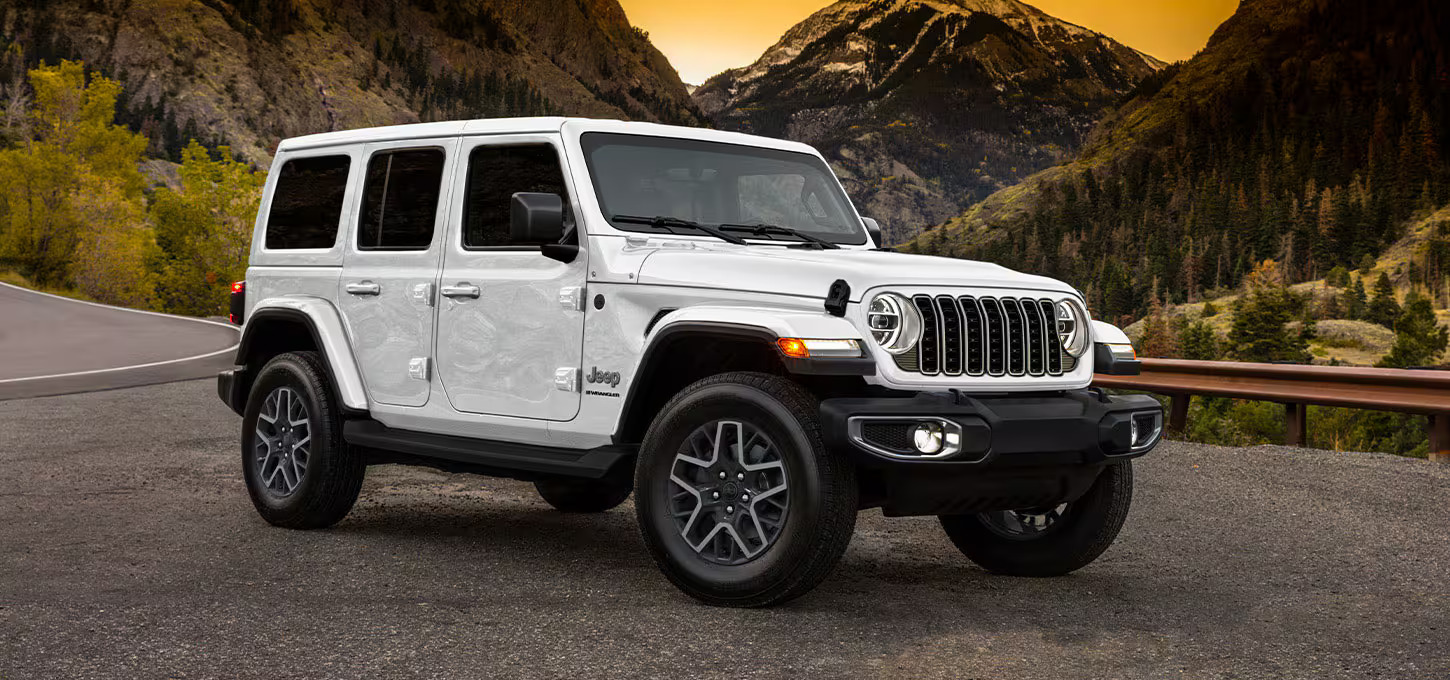
2. Jeep Wrangler
The Jeep Wrangler is a unique vehicle in the automotive landscape, thanks to its rugged design, legendary off-road capability, and distinctive styling that has barely changed for decades. This iconic status contributes greatly to the Wrangler’s remarkably slow depreciation.
Many buyers view the Wrangler not just as transportation but as a lifestyle vehicle, which creates a strong emotional connection and a loyal customer base. As a result, used Wranglers command premium prices, retaining upwards of 70% of their value even after three years.
The Wrangler’s slow depreciation is also bolstered by its unmatched off-road performance. Unlike most SUVs that emphasize comfort and technology, the Wrangler prioritizes durability and terrain versatility.
This specialization appeals to a niche market of outdoor enthusiasts, adventure seekers, and collectors who value the Wrangler’s capability and design authenticity. This specialized appeal limits the number of vehicles flooding the used market, keeping supply tight and resale values high.
Another important aspect is the Wrangler’s relative simplicity and ease of maintenance. Its rugged, body-on-frame construction and mechanical components are well-understood and easy to repair, reducing long-term ownership costs.
The Wrangler does not rely heavily on complex electronics or luxury features that may degrade over time, so buyers are less concerned about potentially expensive repairs. This reliability perception strengthens buyer confidence in used Wranglers, further supporting their strong resale prices.
Jeep’s continuous commitment to maintaining the Wrangler’s iconic design while incorporating modern safety and technology updates has also helped it retain value. Unlike many vehicles that become obsolete quickly due to outdated styling or features, the Wrangler’s classic look remains highly desirable.
When a vehicle’s aesthetic is timeless, it reduces depreciation because buyers are willing to pay for a model with proven style and identity. This blend of tradition and modernity is a key factor in the Wrangler’s slow depreciation.
Market trends also favor the Wrangler’s value retention. The growing popularity of outdoor recreation, camping, and overlanding fuels demand for capable off-road vehicles.
As these lifestyle trends continue, the Wrangler remains the go-to choice for enthusiasts, ensuring a steady used market with minimal value erosion. Additionally, the Wrangler’s limited availability and long wait times for new models often push buyers towards the used market, further strengthening resale values.
Lastly, the Jeep brand has cultivated a unique cultural image associated with freedom, adventure, and rugged individualism. This brand perception creates strong emotional buyer loyalty that transcends typical depreciation patterns.
Many buyers treat the Wrangler as a long-term investment or a collector’s item rather than just a depreciating asset. This perception, combined with practical advantages, firmly establishes the Wrangler as one of the slowest depreciating vehicles over a three-year period.
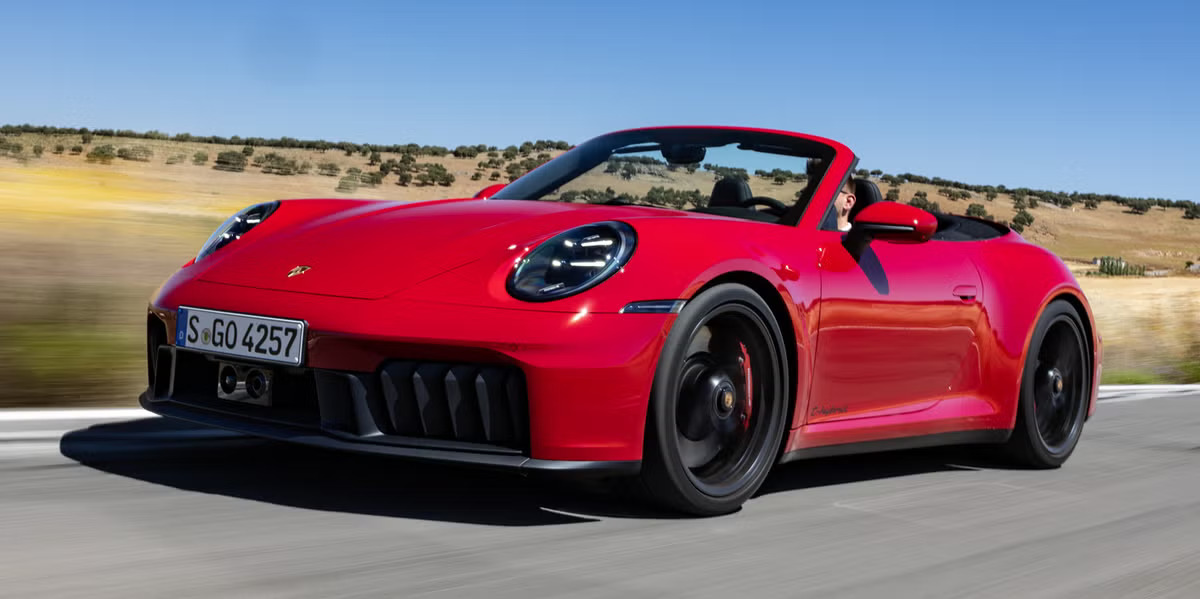
3. Porsche 911
The Porsche 911 stands out in the automotive world as an enduring symbol of high-performance sports cars with remarkable value retention. Despite being a luxury sports car with a high initial price, the 911 experiences one of the slowest depreciation rates over three years.
Several factors contribute to this, starting with the car’s status as a legendary model that has been continuously refined for over five decades. The 911 is often viewed as a collector’s car, with demand that extends beyond just regular drivers to enthusiasts and investors alike.
A significant reason behind the Porsche 911’s slow depreciation is its timeless design and performance excellence. Unlike many sports cars that lose value quickly due to rapid model turnover or niche appeal, the 911’s consistent design language and reputation for exhilarating driving experiences maintain buyer interest.
It blends daily usability with track-ready performance, appealing to a broad group of buyers. This balance ensures steady demand in the used market, which supports stable resale values.
Reliability and build quality also play critical roles in the Porsche 911’s value retention. Porsche has engineered the 911 with meticulous attention to detail, resulting in a sports car that is known for long-term durability despite its high-performance nature.
Well-maintained 911s can provide many years of trouble-free driving, reassuring used buyers who might otherwise shy away from high-performance cars due to maintenance concerns. This reputation lowers perceived risk and helps hold values higher.
The exclusivity and prestige associated with owning a Porsche 911 contribute significantly to its slow depreciation. Limited production runs of special editions, the availability of customization options, and the car’s cultural status create a scarcity effect that keeps prices strong.
Enthusiasts are willing to pay a premium for used 911s, especially models with desirable specifications or rare features. This collector mindset adds a layer of value preservation uncommon in most vehicles.
Moreover, Porsche’s continuous innovation and introduction of newer 911 variants ensure that older models remain relevant and desirable. The brand’s consistent improvements in engine technology, chassis dynamics, and interior refinement elevate each generation’s status without making previous models obsolete.
This evolutionary design philosophy helps sustain demand for three-year-old 911s, as they still offer cutting-edge technology and performance in the used market.
Finally, the 911 benefits from Porsche’s strong warranty coverage and excellent resale programs, including certified pre-owned offerings that give buyers added confidence.
These programs reduce depreciation by assuring used buyers of quality and reliability. The Porsche brand’s commitment to customer satisfaction and resale value management reinforces the 911’s position as one of the slowest depreciating sports cars on the market.
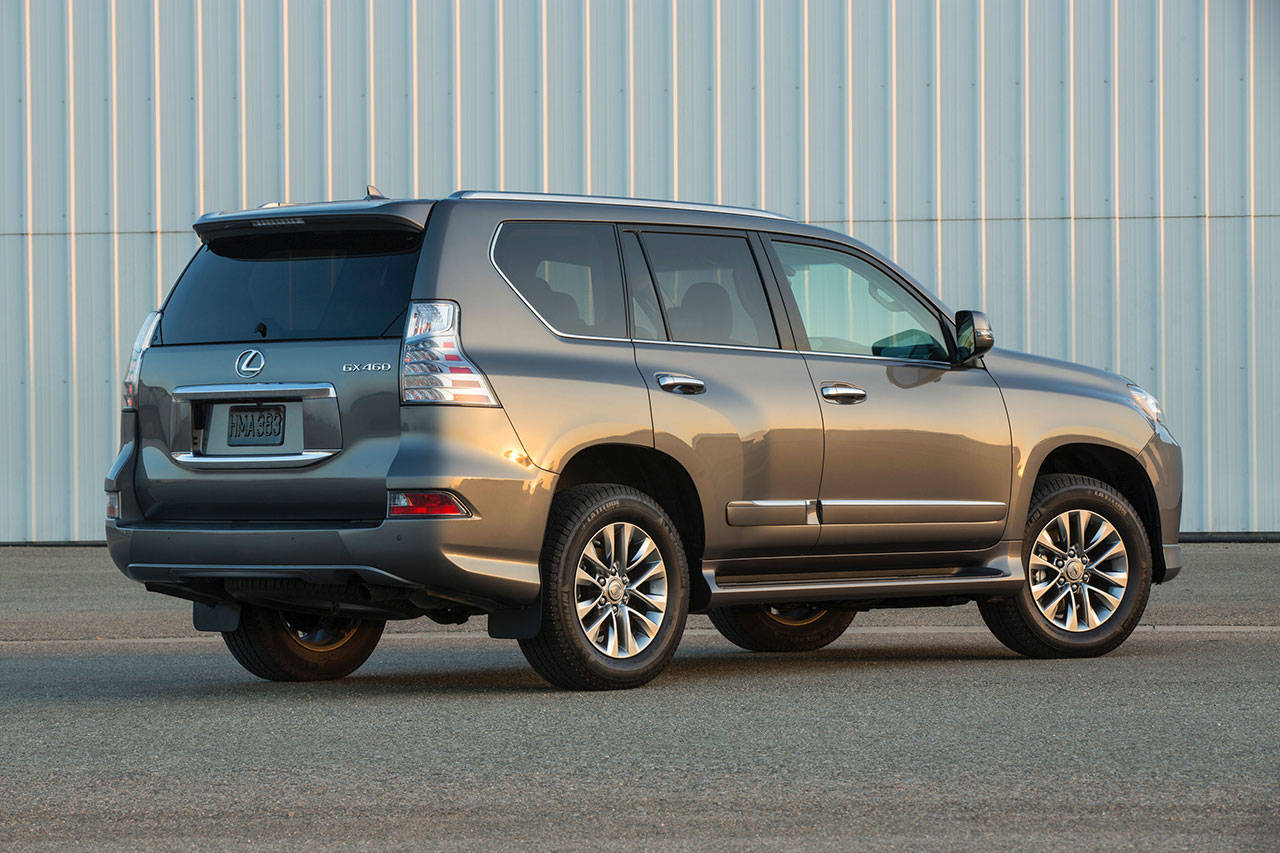
4. Lexus GX
The Lexus GX combines luxury, ruggedness, and reliability, positioning it uniquely among luxury SUVs and helping it retain value exceptionally well. The GX’s reputation for bulletproof reliability and off-road capability attracts buyers who want the best of both worlds: a refined luxury vehicle with serious durability.
This reputation keeps the Lexus GX’s resale values high, with depreciation often limited to 30% or less after three years, much slower than many competitors.
One of the Lexus GX’s strengths is its mechanical underpinnings, which share components with the Toyota Land Cruiser Prado, a vehicle renowned for its durability worldwide. The GX uses a tried-and-true body-on-frame construction and a robust V8 engine, which appeals to buyers who prioritize longevity and ease of repair.
Unlike many luxury SUVs that rely heavily on complex electronics, the GX’s simpler architecture reduces long-term ownership risks, boosting buyer confidence in the used market.
The Lexus brand’s reputation for exceptional customer service and build quality also plays a critical role in the GX’s slow depreciation.
Lexus consistently ranks high in reliability surveys, and this trust translates into higher resale values. Buyers know they are purchasing a vehicle that will last and have access to a well-established dealer network, making the GX a safe used car purchase. This assurance decreases the depreciation penalty typically seen in luxury SUVs.
The Lexus GX also appeals to a niche market of buyers seeking luxury SUVs with genuine off-road ability. While many luxury SUVs emphasize on-road comfort, the GX is capable in tough terrain, allowing it to maintain appeal among outdoor enthusiasts and those in regions with challenging weather or road conditions. This dual appeal expands the buyer pool and supports steady demand, which slows depreciation.
Fuel economy may not be the GX’s strong suit, but this is less of a concern for its buyer demographic, who prioritize reliability and capability over mileage. Moreover, the GX’s design and features have aged well, maintaining a classic and elegant look that does not feel outdated after a few years. This timeless appeal further insulates it from rapid depreciation.
Finally, Lexus pricing and incentive strategies support the GX’s value retention. The GX is typically priced competitively within the luxury SUV segment and is not heavily discounted, preventing steep initial value drops. The combination of brand strength, mechanical reliability, and targeted market appeal makes the Lexus GX a top performer in slow depreciation.
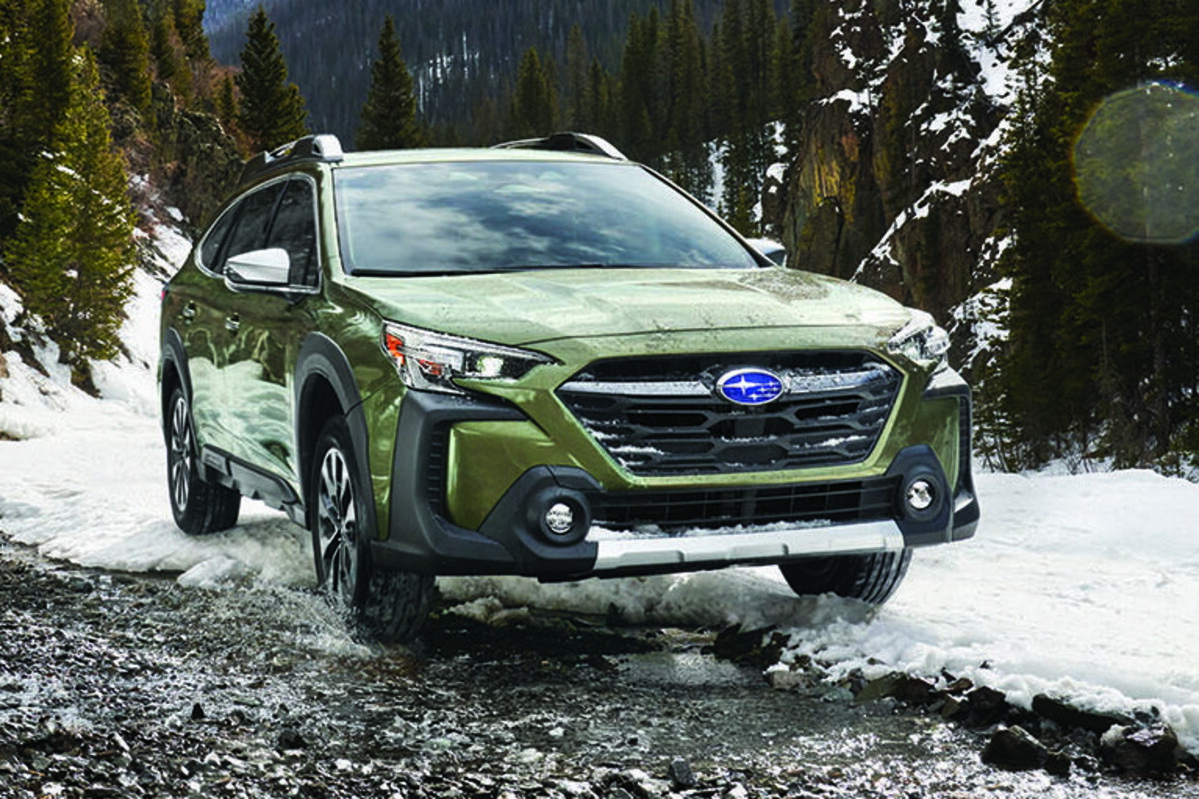
5. Subaru Outback
The Subaru Outback’s blend of practicality, reliability, and rugged capability has made it a favorite among used car buyers, contributing to its impressively slow depreciation rates.
Known for its standard all-wheel-drive system and car-based SUV crossover design, the Outback appeals to a broad range of buyers—from commuters to outdoor adventurers. Its ability to perform well year-round in various conditions ensures consistent demand, helping to preserve its value over the first three years of ownership.
One of the Outback’s primary appeals is its safety and reliability record. Subaru places a strong emphasis on safety technology, and the Outback often receives top ratings in crash tests and reliability surveys.
Buyers feel confident in purchasing a used Outback, knowing that the vehicle is not only durable but also well-equipped to protect occupants. This trust drives steady resale demand, reducing depreciation.
The Outback also benefits from Subaru’s brand loyalty, which is unusually high. Many Subaru owners return to the brand due to their positive experiences, which creates a reliable used market for Outbacks.
The model’s reputation for ruggedness, combined with the practicality of a wagon body style, allows it to appeal to buyers who want more space and capability than a typical sedan without moving into a large SUV. This unique market position supports value retention.
Fuel efficiency and cost of ownership are also competitive factors that help the Outback retain value. While offering AWD and higher ground clearance, the Outback maintains reasonable fuel economy, making it attractive for buyers who want utility without sacrificing efficiency. Lower operating costs encourage resale demand, especially in regions with harsh weather where AWD is desirable.
The Outback’s continuous evolution with modern infotainment, safety features, and refined interiors keeps it competitive against newer models. Subaru’s ability to update the Outback without sacrificing its core strengths makes it appealing as a used vehicle. Buyers are less likely to see a three-year-old Outback as outdated, helping hold depreciation at bay.
Finally, the Outback’s versatility—serving as a family vehicle, outdoor companion, and commuter car—ensures broad market appeal. This diverse buyer base helps maintain strong resale values across many geographic and demographic segments. With its solid combination of features, reliability, and brand trust, the Subaru Outback remains a leader in slow vehicle depreciation over three years.
Also Read: 5 Pickups With Best Spray-in Bedliners And 5 With Rust-prone Beds
Depreciation remains one of the most important yet often overlooked aspects of vehicle ownership. It affects not only the initial purchase decision but also ongoing expenses, financing options, insurance rates, and ultimately the financial outcome when it comes time to sell or trade the vehicle.
The contrasting cases of the five cars with the fastest depreciation and the five with the slowest depreciation over a three-year period highlight how diverse the automotive market is and how various factors interplay to shape a vehicle’s value trajectory.
The cars that depreciate fastest typically share several common traits. These include a combination of high initial prices that quickly lose relevance, lackluster reliability or costly maintenance, rapidly changing consumer preferences, and market oversaturation.
For example, luxury sedans or high-performance vehicles with limited practical appeal may fall out of favor as newer models arrive with more advanced features or more attractive designs.
Additionally, vehicles that accumulate negative reputations—whether for reliability, safety, or fuel economy—face steep declines in their used market values. While these vehicles might be tempting to buy new due to aggressive incentives or feature sets, their rapid depreciation can lead to significant financial loss within just a few years of ownership.
On the flip side, the slowest depreciating cars exhibit a blend of trusted brand equity, mechanical reliability, and enduring desirability. Vehicles like the Toyota Tacoma or Jeep Wrangler benefit from strong, loyal customer bases that value longevity and capability, which maintains demand and tight supply in the used market.
Sports cars such as the Porsche 911 hold their value due to their iconic status and limited availability, appealing to collectors and enthusiasts alike. Meanwhile, luxury SUVs like the Lexus GX combine ruggedness with refinement, addressing niche markets that preserve their worth.
Even versatile and practical vehicles like the Subaru Outback benefit from a perfect storm of reliability, safety, and brand loyalty, ensuring their appeal remains high over time.
This divergence underscores the importance of considering depreciation as a key factor when purchasing a vehicle. Buyers who plan to keep a car for only a few years should particularly focus on vehicles with slow depreciation rates to protect their investment.
Similarly, lessees looking to avoid high lease-end costs or hefty buyout prices can benefit from selecting vehicles that maintain their value well. Meanwhile, long-term owners can enjoy peace of mind from reliable vehicles with strong resale markets that reduce total cost of ownership.
Another takeaway is the role of brand reputation and emotional appeal in shaping depreciation outcomes. Cars that inspire passion or a sense of identity often transcend typical market forces, allowing them to retain value beyond purely practical considerations.
This highlights how buyer psychology, cultural trends, and enthusiast communities all contribute to a vehicle’s financial trajectory. It’s not just about mechanical features or performance metrics, but also about how a car fits into people’s lifestyles and aspirations.
Additionally, the ongoing evolution of technology and consumer preferences means that depreciation patterns are not static. What holds value today may change as new innovations, environmental regulations, and market disruptions unfold.
For instance, the rise of electric vehicles and shifts in urban mobility may reshape which vehicles maintain or lose value fastest in the coming years. As such, buyers should keep an eye on broader industry trends and how they might impact future depreciation.
Ultimately, understanding depreciation is about making informed choices that align with your needs, budget, and goals. Whether you prioritize minimizing financial loss, maximizing vehicle enjoyment, or striking a balance between both, knowing which cars hold or lose value fastest can serve as a powerful guide.
By steering toward vehicles with proven value retention or carefully weighing the risks of fast depreciation, buyers can navigate the complexities of car ownership with greater confidence.
In summary, the five cars with the fastest depreciation and the five with the slowest depreciation paint a vivid picture of the diverse factors influencing vehicle value. From rugged pickups and iconic sports cars to luxury SUVs and dependable crossovers, each category offers lessons in what drives demand and price retention.
With these insights, prospective buyers can approach the automotive market more strategically, turning depreciation from a costly unknown into a manageable aspect of vehicle ownership.

